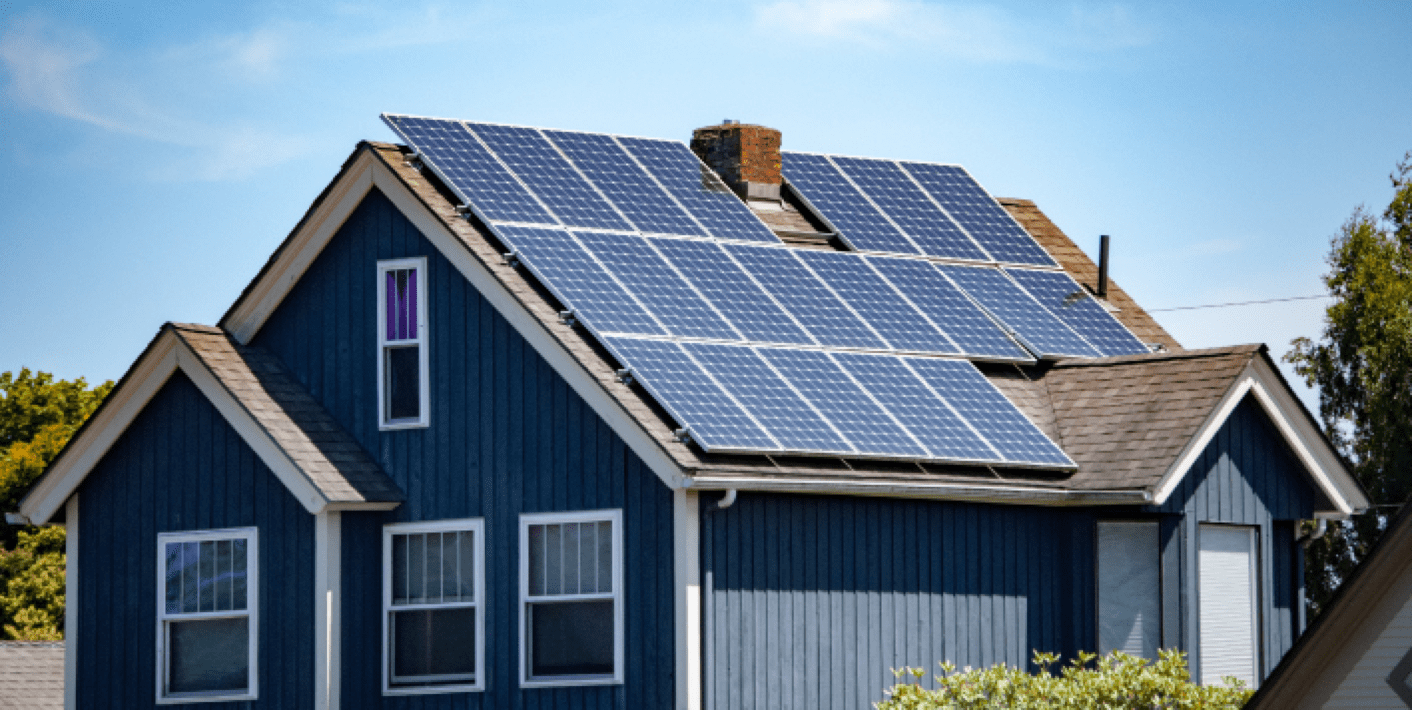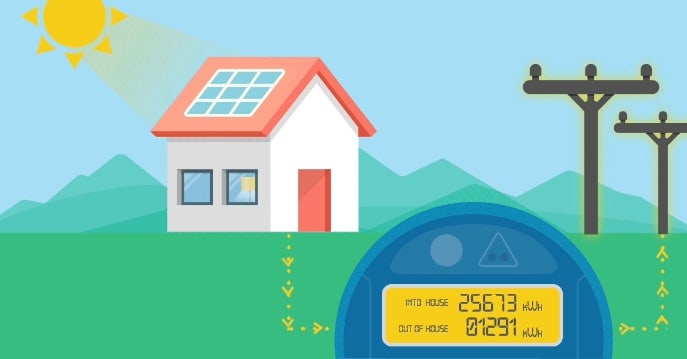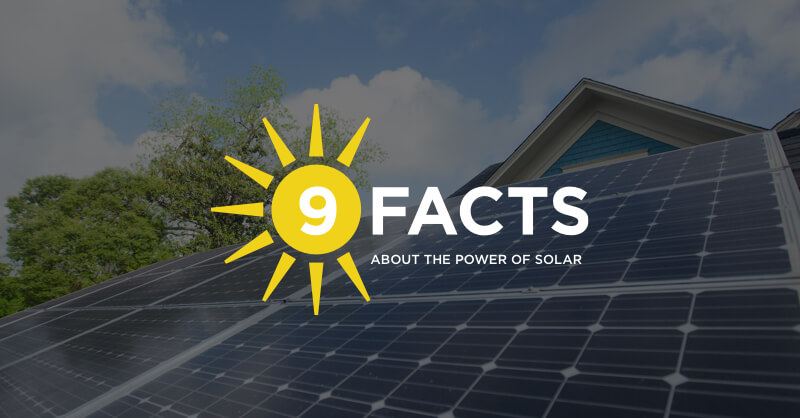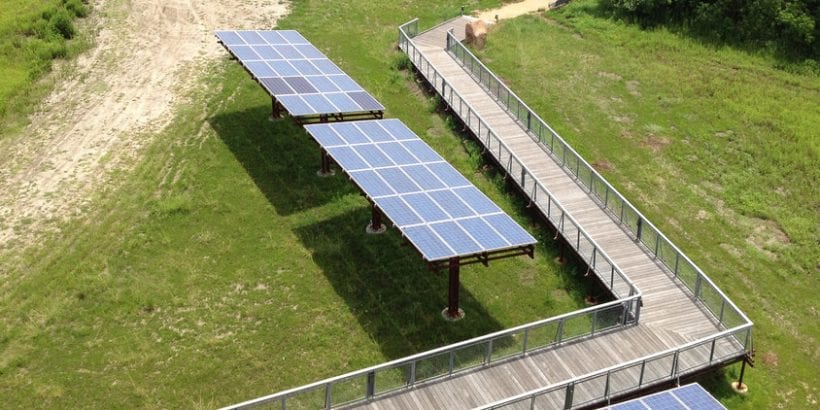Green Mountain Energy® Blog
Your 2025 Guide to Savings with Solar Tax Credits and Incentives.



If you had solar panels installed on your rooftop in 2024, you may want to take advantage of federal solar tax credits when filing this year. These credits, along with the incentives outlined in the Residential Clean Energy Act, can significantly reduce your installation costs. For additional savings, check out your state and federal tax credits and incentives.
What Is the Federal Solar Investment Tax Credit (ITC)?
The Federal Solar Investment Tax Credit (ITC) was created to encourage the adoption of renewable energy by making solar electricity more affordable and accessible. The ITC helps lower the upfront cost of a solar panel system by letting you claim a tax credit for part of the installation cost. By lowering upfront costs, investing in solar is more economical, allowing individuals to reduce their reliance on fossil fuels and live more sustainability.
Solar panel systems installed in 2021 and 2022 were eligible for a 26% tax credit. But the U.S. government sweetened the pot by raising the ITC to 30% for systems installed from 2022-2034. Panel expenses, inverters, racking and labor can all go toward your claim.
The Federal Solar Investment Tax Credit must be claimed for the year the installation was completed. So that means if you installed a system in 2024, you’d need to claim that credit on your 2024 tax return, which is due by April 15, 2025.
To be clear, you can’t claim the credit for a system installed in 2021 (or any prior year for that matter) on your 2025 taxes. If you’re unsure about whether you’re following the correct procedures, consult a tax professional.
Benefits of the Federal Solar Tax Credit:



Significant Savings
A 30% reduction in solar installation costs can make a difference in affordability for many households.



Widely Available
The ITC covers not only residential homes but also commercial properties, expanding its appeal.



Long-Term Value
By lowering the upfront cost, the ITC shortens the payback period for solar panel systems, making them an attractive financial investment.
Who Qualifies for the Federal Solar Tax Credit?
To qualify for the tax credit in 2025, your solar system must be installed and operational within the preceding year. The ITC is available only if you own your solar panel system. If you lease the system or enter a power purchase agreement (PPA), you will not be eligible.
How to qualify:
If you meet the criteria above, you more than likely are eligible for this credit.
How to Claim the ITC: A Step-by-Step Process for Homeowners.
If you’re a homeowner looking to take advantage of the ITC, proper documentation is paramount. Following these steps can help you ensure you receive the credit you’re entitled to.
Homeowners:
- Keep all receipts and installation documents.
- Download the IRS Form 5695 (Residential Energy Credits).
- Complete Part I for Residential Energy Efficiency Property Credit.
- Enter the solar PV system costs on line 1.
- Follow the instructions to calculate your credit amount.
- Transfer the credit amount to line 5 of Schedule 3 (Form 1040).
- Attach Form 5695 to your federal tax return.
- Send in your completed tax return, Form 5695 and Schedule 3 to the IRS.
How Does the ITC Work?
The ITC reduces the amount of federal income tax you owe by a percentage of the solar system's cost. For example, if your total solar installation costs $20,000, you can claim a $6,000 tax credit on your 2024 tax return. This credit is applied directly to your tax bill, significantly lowering or even potentially eliminating your federal tax liability for the year. If your tax liability is lower than the credit amount, unused credits can roll over to future years.
Claim Federal Solar Tax Credits Designed for Businesses.
Companies that installed solar panel systems in 2024 can also claim a 30% federal tax credit, with some additional benefits specific to commercial installations. Businesses may qualify for the Production Tax Credit (PTC), which provides credits based on energy production. They can also take advantage of the Modified Accelerated Cost Recovery System (MACRS) and bonus depreciation, allowing them to recover solar investment costs through tax deductions over five years.
Unlike residential systems that qualify for the credit upon completion, commercial projects can use the “commence construction” rule to lock in their credit rate before the system is finished, thanks to the Safe Harbor Provision. The Safe Harbor Provision allows businesses to lock in current tax credits when they begin their solar project, even if the installation is completed years later.
Securing the ITC: A Simple Process for Businesses
If you’re a business owner and want to benefit from the ITC, follow these steps to ensure your business receives the credit it qualifies for:
- Ensure your system meets commercial eligibility criteria.
- Keep all related receipts and documents.
- Download IRS Form 3468 (Investment Credit).
- Complete Part III of the form for the Energy Credit.
- Enter system costs on line 12a.
- Follow the instructions to calculate your 30% credit.
- Transfer the credit amount to the appropriate line on your business tax return.
- Attach Form 3468 to your federal tax return.
- Submit your completed tax return, including Form 3468, to the IRS.
State Solar Tax Credits: An Overlooked Opportunity.
Beyond federal incentives, state and local solar tax credits and rebates are valuable tools to further reduce your costs. These incentives vary widely based on location, and in some cases, they are offered at the utility, county or city level. Visit your state’s energy department website to find information on the types of rebates available to you and how to apply for them.
Why State Credits Matter.
State-level incentives can provide additional savings, making solar panel installation more attainable. For example, while the federal ITC may reduce your upfront costs by 30%, combining it with a state rebate of $5,000 could reduce the actual cost of your system by 50% or more. These programs often aim to boost local adoption of renewable energy and contribute to state-level sustainability goals.
How to Research Local Solar Credits.
Finding available solar incentives in your area requires a bit of work on your part, but the potential savings are worth the effort. Here’s how to get started:
- Start at the State Level: Visit your state’s energy department website or check databases like the Database of State Incentives for Renewables & Efficiency (DSIRE) to see what programs are available.
- Check with Local Utilities: Your local utility company may offer solar rebates, net metering incentives or low-interest financing options for homeowners who install solar panels.
- Look for County or City Programs: Some areas, especially those with sustainability initiatives, provide localized incentives like property tax abatements or cash rebates.
- Consult with a Solar Installer: Reputable solar companies are familiar with the incentives available in your region and can guide you through the application process.
Examples of State Solar Rebates:
New York
Homeowners can claim a 25% tax credit on system costs, up to $5,000, through the New York State Solar Energy System Equipment Credit.*
California
Incentives like the Self-Generation Incentive Program (SGIP) provide rebates for energy storage systems paired with solar.*
Texas
Some local utilities, like Austin Energy, offer rebates for solar installations, while property tax exemptions prevent your home’s value from increasing due to solar improvements. Visit the Texas State Energy Conservation Office’s website to claim these incentives.*
Double-Dip by Applying for Federal and State Solar Tax Credits.
If you’re looking to make the most of your solar investment, combining the federal ITC with state-level incentives is the way to go. This approach allows you to "stack" benefits for greater financial savings. One of the key advantages of combining federal and state solar tax credits is the ability to lower your net installation costs.
Look at the examples below for how this might work by state.
- A homeowner in Massachusetts might combine the federal ITC with the Massachusetts Residential Renewable Energy Income Tax Credit, which provides up to $1,000 in additional savings.
- In Arizona, state tax credits provide up to $1,000 for installing solar systems, which can be claimed alongside the ITC.
Tips for Maxing Out Savings with Combined Credits.
Combining federal and state incentives can significantly reduce the cost of your solar installation, but understanding how these incentives work is essential to boosting your savings. Before moving forward, consider the following factors to help you take advantage of all available solar tax credits.
- Incentive Calculation: State incentives are usually calculated after federal tax credits. For instance, if your system costs $20,000 and you claim the ITC, reducing your cost to $14,000, the state incentive would then apply to the reduced amount.
- Caps and Limits: Some state programs have caps on the maximum amount you can claim. Be sure to check these details to avoid surprises.
- Tax Considerations: Some state incentives are taxable, so you may owe taxes on rebates received.
Don’t Miss Out on 2025 Solar Incentives.
If you installed solar panels in 2024 and are filing your taxes before April 15, 2025, now is the perfect time to take advantage of solar panel incentives. By combining the federal ITC with state and local programs, homeowners and businesses can significantly reduce the cost of solar panel installation. The process can be complex, but with careful planning, homeowners and businesses can capitalize on these savings and make the switch to solar energy with confidence.
Prepare now for a solar-powered tomorrow.
Switching to solar is a smart investment for your home, your wallet and the planet. If you’re considering making the switch, start laying the groundwork now:
- Plan early. Solar projects can take time, so start now to meet the deadline.
- Work with certified installers. They’ll guide you through the process and help with incentives.
- Look into financing. Solar loans and payment plans can make solar more affordable.
With Green Mountain Energy as your trusted renewable electricity partner, you’ve got options. From our Renewable Rewards Buyback program that lets you earn credits for the energy you produce to our Powered by Sunshine plans that allow you to enjoy solar without having panels, we have plans that fit your lifestyle. Make 2025 the year you leap into renewable energy and start reaping the benefits of solar installation tax benefits for a greener, more sustainable future.
Get rewarded for the excess energy your solar panels produce with our Renewable Rewards Buyback plans.
*The information provided is accurate as of the time of publishing. Please consult your local government or relevant agencies for the most up-to-date details on solar incentives and programs in your area.
Our customers have avoided
pounds of CO2
That’s like planting
new trees.

















